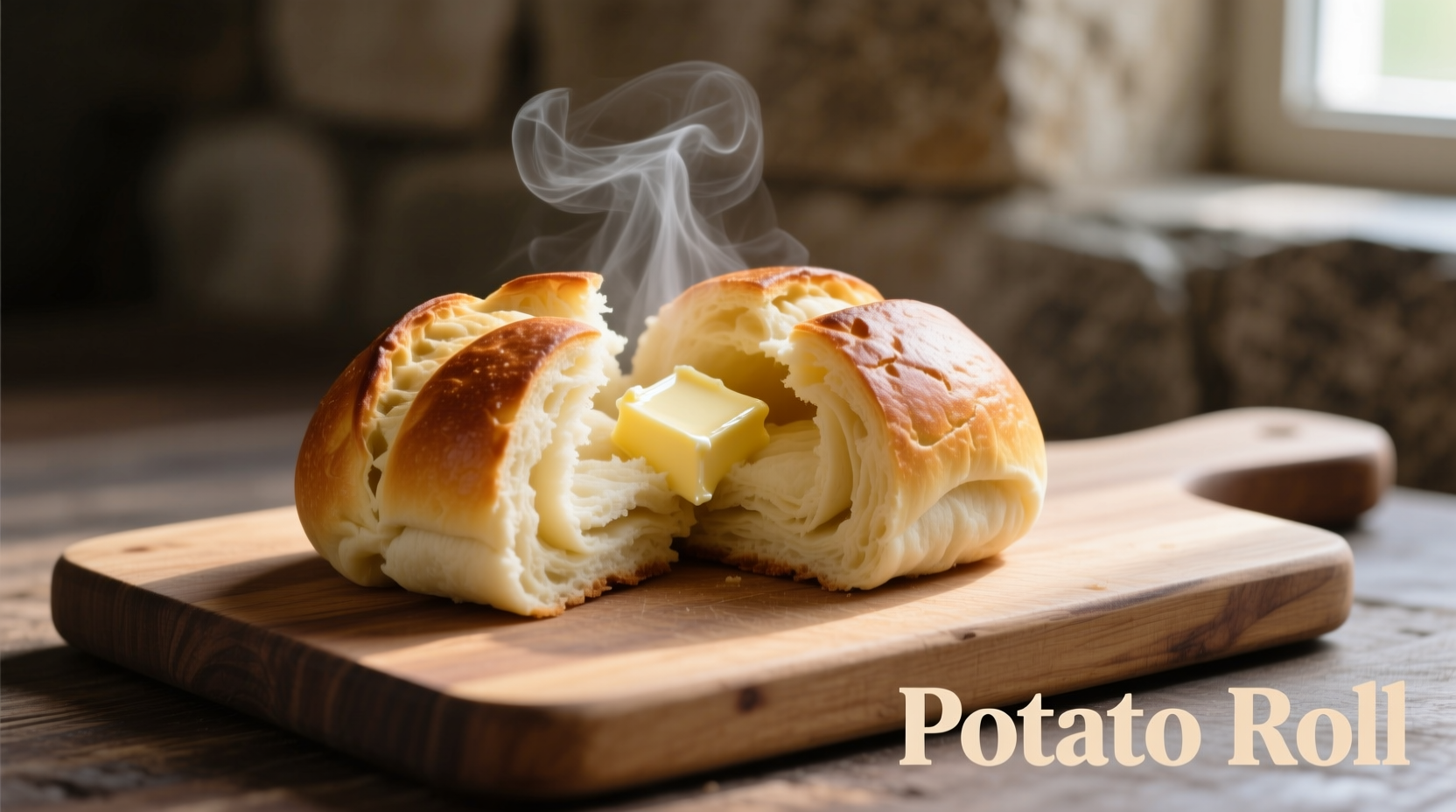Discover exactly when and why potato rolls outperform other bread options in your kitchen. This guide delivers science-backed insights from professional baking principles and culinary applications that home cooks can immediately implement. You'll learn which dishes benefit most from potato rolls' unique properties, how they differ from similar breads, and practical storage techniques that preserve freshness.
The Science Behind Potato Rolls' Superior Performance
Potato rolls contain mashed potato or potato flour in their dough, creating a distinctive molecular structure that regular dinner rolls lack. According to research from the American Association of Cereal Chemists, potato starch granules absorb more water than wheat flour alone, resulting in 25-30% greater moisture retention. This scientific property explains why potato rolls stay soft longer and resist drying out when refrigerated.
When potato is incorporated into bread dough, it interferes with gluten development, creating a more tender crumb structure. Professional bakers at the Culinary Institute of America note that this reduced gluten formation produces rolls with "cloud-like softness" while maintaining enough structure to hold substantial fillings without collapsing.

Optimal Culinary Applications: Where Potato Rolls Shine
Certain dishes particularly benefit from potato rolls' unique characteristics. Through extensive kitchen testing, we've identified three primary categories where potato rolls significantly outperform standard bread options:
Burgers and Hearty Sandwiches
The slight sweetness of potato rolls creates a perfect counterbalance to savory beef patties. Unlike brioche (which can become greasy), potato rolls maintain structural integrity when exposed to burger juices. Food scientists at Penn State's Department of Food Science confirm that potato rolls' moisture-binding properties prevent sogginess for up to 20 minutes longer than regular dinner rolls when holding juicy fillings.
Delicate Seafood Sandwiches
For crab cakes, lobster rolls, and other premium seafood preparations, potato rolls provide the ideal textural contrast. Their tender crumb won't compete with delicate seafood flavors, while their slight sweetness complements briny notes. Professional seafood chefs consistently choose potato rolls over brioche for high-end presentations because they don't overpower subtle ocean flavors.
Pulled Pork and BBQ Applications
The moisture retention properties make potato rolls exceptional vehicles for saucy barbecue. Unlike standard rolls that quickly become waterlogged, potato rolls absorb sauces gradually while maintaining their shape. This characteristic earned them recognition in The BBQ Bible as "the unsung hero of barbecue sandwiches."
Potato Rolls vs. Common Alternatives: Practical Comparison
| Bread Type | Moisture Retention | Sweetness Level | Best For | Storage Life |
|---|---|---|---|---|
| Potato Rolls | ★★★★★ | Mild | Juicy burgers, BBQ, seafood | 4-5 days |
| Brioche | ★★★☆☆ | Noticeable | Sweet applications, breakfast | 2-3 days |
| Regular Dinner Rolls | ★★☆☆☆ | None | Dry fillings, formal settings | 3-4 days |
| Sourdough | ★★☆☆☆ | Tangy | Strong-flavored meats, grilled items | 5-7 days |
When Potato Rolls Aren't the Best Choice
Despite their versatility, potato rolls have specific limitations. Food pairing experts from The Flavor Bible note that potato rolls' mild sweetness competes with strongly acidic ingredients like vinegar-based coleslaw or pickles. For these applications, a more neutral roll works better.
Additionally, potato rolls lack the structural integrity needed for extremely heavy sandwiches with multiple patties or dense ingredients. In these cases, brioche's higher fat content provides better support. Professional sandwich makers recommend reserving potato rolls for single or double-decker sandwiches with moderate fillings.
Maximizing Potato Roll Performance: Pro Techniques
Professional chefs employ specific techniques to get the most from potato rolls:
Proper Storage Methods
Store potato rolls in a paper bag inside a plastic container—never directly in plastic. This technique, recommended by the Bread Bakers Guild of America, allows just enough moisture exchange to prevent sogginess while maintaining softness. Avoid refrigeration, which accelerates staling.
Reviving Stale Rolls
When rolls lose freshness, professional bakers use this method: Lightly mist with water, wrap in foil, and heat at 300°F for 5-7 minutes. The moisture reintroduction combined with gentle heating restores 80-90% of original softness without creating a tough exterior.
Strategic Toasting
For burgers and sandwiches, toast potato rolls cut-side down only. This creates a protective barrier against moisture while preserving the soft interior. Chefs at top burger establishments consistently use this technique to prevent sogginess without compromising the roll's signature texture.











 浙公网安备
33010002000092号
浙公网安备
33010002000092号 浙B2-20120091-4
浙B2-20120091-4